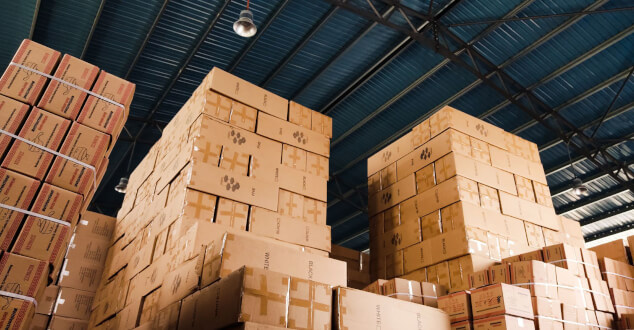The Future of Storing and Moving Stuff: Why Trying New Things and Teamwork Matter
Published on 10 April, 2024 in Operational Excellence
In the rapidly evolving world of logistics, the industry dedicated to storing and moving goods is at a pivotal moment, marked by both unprecedented growth and daunting challenges. Over the last decade, storage space, particularly in the form of warehouses, has seen a remarkable expansion. Specifically, shed space has grown by 61% in the last decade and an impressive 22% in just the last three years. Despite the recent slowdown in e-commerce activity caused by the increased cost of living, the trend since 2015 is overwhelmingly positive and will continue to drive a strong demand for warehouse space in the future. However, as these storage spaces become more common, the industry faces a significant challenge: a growing labour shortage that threatens to slow down its expansion.
Big Growth, Big Problems
The expansion of shed capacity is a testament to the logistics industry's critical role in the global economy, particularly as it shifts towards e-commerce. But this growth comes with its own set of challenges. One of the most pressing is the shortage of workers. New storage facilities, especially those located in remote areas, struggle to attract employees. Despite offering additional benefits like free transportation and onsite dining options, these efforts often fall short. The complexity of handling a wide variety of SKUs requires a workforce that is not only sizable but also adaptable and skilled, making the staffing issue even more acute. Industry data highlights the gravity of this situation, noting a projected 30% increase in e- commerce sales over the next five years, further accelerating the demand for skilled warehouse staff. Simultaneously, the current unemployment rate, currently at a low 3.8%, indicates a tight labour market, making recruitment even more challenging.
Time for New Ideas
Facing these challenges, the industry must embrace innovation. This necessity extends beyond the adoption of new technologies to include financial and partnership models. Traditional financial models focus on short-term gains, with ROI (Return on Investment) calculations typically confined to the current contract's lifespan. However, the industry's dire need for automation, highlighted by a 70% increase in investment in robotics and automated systems in the last two years alone, calls for a shift in mindset. Investments now may not yield immediate returns but are crucial for long-term sustainability and efficiency.

Sharing the Load
A significant part of addressing these challenges involves rethinking financial relationships within the industry. Moving away from traditional cost-sharing models, there is an urgent need for frameworks that facilitate shared gains. Proposing longer-term contracts between logistics providers and retailers could create a more stable environment conducive to mutual benefits. This approach aligns financial interests and encourages collective investments in innovative solutions, benefiting the entire supply chain.
For example, a recent survey by the National Retail Federation found that 65% of retailers are willing to invest more in supply chain innovation if the costs and benefits are shared with logistics partners. This indicates a readiness within the industry to explore new financial models that support long-term, collaborative innovation.
Collaboration Is Key
The way forward for the logistics and warehousing industry is through collaboration. Warehouses, retailers, and technology developers need to forge closer partnerships to tackle the industry's unique challenges. By pooling knowledge and resources, they can develop flexible, scalable solutions that address current issues and anticipate future needs.
The automotive industry provides a compelling example of successful collaboration. Over the past three decades, sustained investment in innovation and strategic partnerships has transformed automotive manufacturing, leading to significant advancements in automation and operational efficiency. These lessons can be invaluable to the logistics sector as it seeks to navigate its current challenges.
The Role of Data and Analytics
Innovative technologies, particularly data analytics and IoT (Internet of Things), offer another avenue for improvement. By harnessing data, logistics companies can optimize routes, improve inventory management, and increase the overall efficiency of their sheds. The global market for smart logistics, valued at $150 billion in 2020, is expected to reach $300 billion by 2025, reflecting the potential of these technologies to revolutionise the industry.
Conclusion: A Unified Approach
As it stands, the logistics and warehousing industry is on the brink of a new era. The challenges it faces, from labour shortages to the need for technological advancement, are formidable but not insurmountable. By embracing a holistic approach that combines technological advancement with strategic financial planning and robust partnerships, the industry can overcome these hurdles.
Innovation, in technology and financial strategy, is critical. The industry must foster an environment where experimentation is encouraged, and long-term investments are valued. Collaborative efforts and shared goals are essential for unlocking new efficiencies and productivity levels.
The future of logistics and warehousing is not just about navigating immediate challenges but building a resilient, efficient, and sustainable system capable of adapting to the demands of a rapidly changing global economy. With a unified approach, the industry can not only meet these challenges but also thrive, ensuring its role as a cornerstone of the global market for years to come.
